Grow Romanesco Cauliflower, and unlock the secrets to cultivating this stunning, fractal vegetable right in your own backyard! Have you ever seen a Romanesco cauliflower at the farmer’s market and been completely mesmerized? I know I have! Its intricate, spiraling florets are not only a feast for the eyes but also a delicious and nutritious addition to any meal. But did you know that you don’t have to rely on expensive specialty stores to enjoy this unique vegetable?
The Romanesco cauliflower, a relative newcomer to the brassica family, boasts a history that traces back to 16th-century Italy. Its distinctive geometric pattern, a natural example of a Fibonacci sequence, has captivated mathematicians and artists alike for centuries. Beyond its aesthetic appeal, this vegetable offers a milder, nuttier flavor compared to traditional cauliflower, making it a versatile ingredient in various dishes.
Many gardeners shy away from attempting to grow Romanesco cauliflower, believing it to be too challenging. But I’m here to tell you that with the right knowledge and a few simple DIY tricks, you can successfully cultivate this architectural marvel in your own garden. Imagine the satisfaction of harvesting your own Romanesco, knowing you nurtured it from seed to stunning fruition! This guide will provide you with easy-to-follow steps and insider tips to ensure a bountiful harvest. Let’s get started and transform your garden into a Romanesco wonderland!
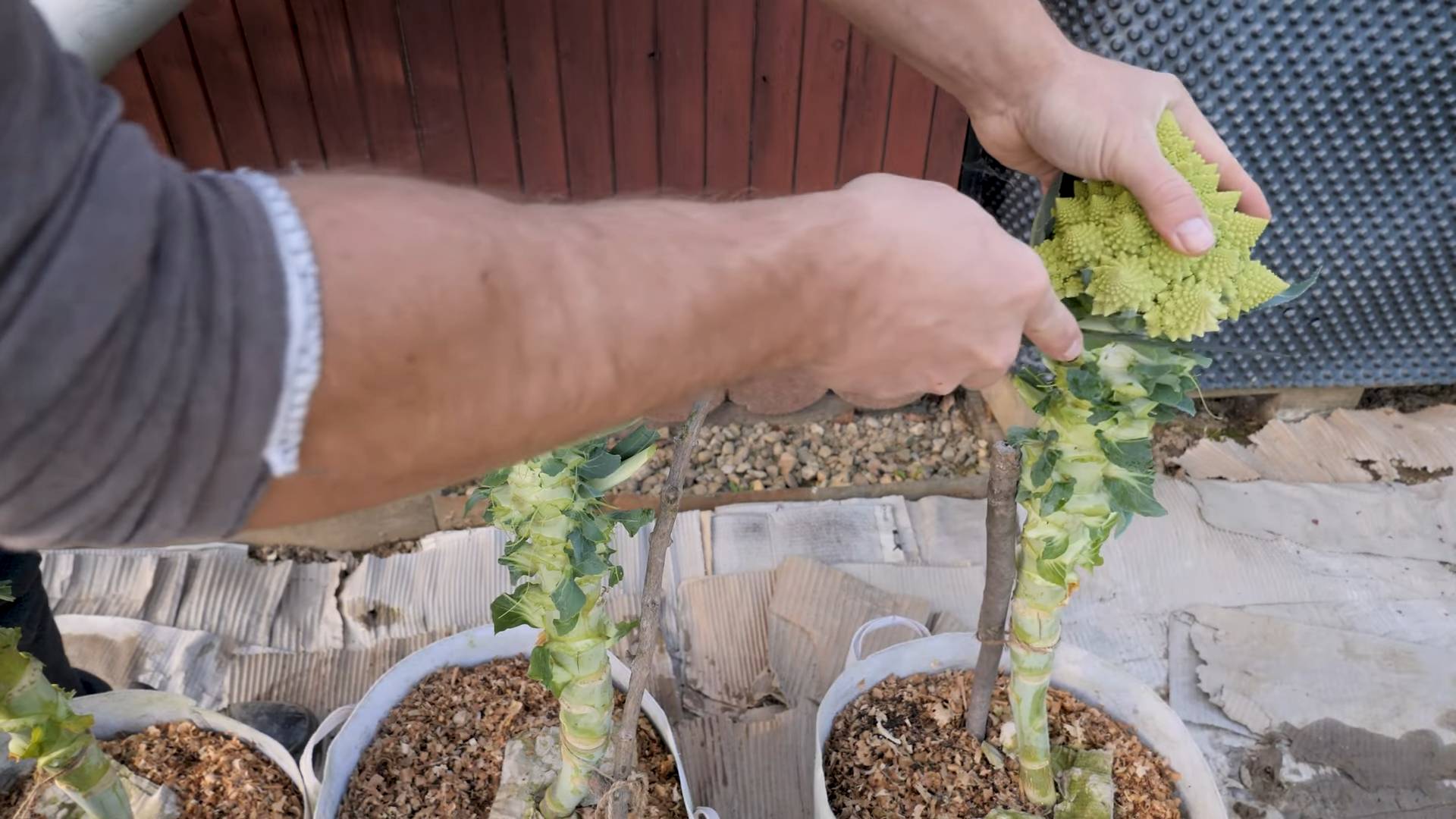
Growing Romanesco Cauliflower: A Step-by-Step Guide to Fractal Fun!
Okay, friends, let’s dive into the wonderfully weird world of Romanesco cauliflower! This isn’t your grandma’s bland, white cauliflower. Romanesco, with its mesmerizing fractal pattern, is a showstopper in the garden and on the plate. I’m going to walk you through everything you need to know to successfully grow this unique vegetable. Get ready to impress your neighbors (and yourself!) with this garden gem.
Choosing the Right Variety and Starting Seeds
First things first, let’s talk about variety. While “Romanesco” is generally what you’ll find, some seed companies might offer slightly different strains. Look for terms like “Natalino” or simply “Romanesco Broccoli” – they’re all pretty similar and will give you that characteristic spiral shape.
Now, onto starting seeds. You can directly sow Romanesco, but I’ve found that starting them indoors gives them a head start, especially if you live in an area with a shorter growing season.
1. Gather Your Supplies: You’ll need seed starting trays or small pots, a good quality seed starting mix (not garden soil!), Romanesco seeds, a spray bottle, and a warm, sunny location or grow lights.
2. Sow the Seeds: Moisten the seed starting mix and fill your trays or pots. Make a small indentation (about ¼ inch deep) in each cell or pot. Place one or two seeds in each indentation and gently cover them with the mix.
3. Water Carefully: Use a spray bottle to gently mist the soil. You want it to be moist, but not soggy.
4. Provide Warmth and Light: Romanesco seeds germinate best in warm conditions (around 70-75°F). Place your trays or pots in a warm, sunny spot or under grow lights. If using grow lights, keep them a few inches above the soil surface and provide 14-16 hours of light per day.
5. Keep the Soil Moist: Check the soil daily and mist as needed to keep it consistently moist.
6. Thin Seedlings (If Necessary): If you planted two seeds per cell and both germinate, thin them out by snipping off the weaker seedling at the soil line. This will give the stronger seedling room to grow.
7. Harden Off Seedlings: About a week before you plan to transplant your seedlings outdoors, you’ll need to “harden them off.” This process gradually acclimates them to outdoor conditions. Start by placing them outside in a sheltered location for a few hours each day, gradually increasing the amount of time they spend outdoors. Protect them from direct sunlight and strong winds at first.
Preparing the Garden Bed
Romanesco cauliflower needs a sunny spot with well-drained soil. It’s a heavy feeder, so enriching the soil with compost or well-rotted manure is crucial.
1. Choose a Sunny Location: Romanesco needs at least 6 hours of direct sunlight per day.
2. Test Your Soil (Optional): A soil test can tell you the pH and nutrient levels of your soil. Romanesco prefers a slightly acidic to neutral pH (around 6.0-7.0).
3. Amend the Soil: Dig in plenty of compost or well-rotted manure to improve drainage and fertility. I usually add a generous layer (2-3 inches) and work it into the top 6-8 inches of soil.
4. Consider Adding Fertilizer: If your soil is lacking in nutrients, you can also add a balanced fertilizer (like 10-10-10) according to the package directions.
5. Ensure Good Drainage: Romanesco doesn’t like to sit in soggy soil. If your soil is heavy clay, consider adding sand or other amendments to improve drainage.
6. Prepare the Planting Area: Rake the soil smooth and remove any rocks or debris.
Transplanting Seedlings
Once your seedlings have developed a few sets of true leaves (usually about 4-6 weeks after sowing) and the danger of frost has passed, it’s time to transplant them into the garden.
1. Choose a Cloudy Day: Transplanting on a cloudy day will help reduce stress on the seedlings.
2. Water the Seedlings: Water the seedlings thoroughly a few hours before transplanting. This will help them slide out of their containers more easily.
3. Dig Holes: Dig holes that are slightly larger than the root balls of your seedlings. Space the holes about 18-24 inches apart.
4. Gently Remove Seedlings: Gently remove the seedlings from their containers, being careful not to damage the roots. If the roots are tightly bound, gently loosen them with your fingers.
5. Plant the Seedlings: Place the seedlings in the holes and backfill with soil. Make sure the top of the root ball is level with the surrounding soil.
6. Water Thoroughly: Water the seedlings thoroughly after planting.
7. Mulch (Optional): Applying a layer of mulch around the plants will help retain moisture, suppress weeds, and regulate soil temperature. I like to use straw or shredded leaves.
Caring for Your Romanesco Plants
Now that your Romanesco plants are in the ground, it’s important to provide them with the care they need to thrive.
1. Water Regularly: Romanesco needs consistent moisture, especially during hot, dry weather. Water deeply whenever the top inch of soil feels dry. Avoid overhead watering, as this can promote fungal diseases.
2. Fertilize: Romanesco is a heavy feeder, so you’ll need to fertilize it regularly. I like to use a liquid fertilizer (like fish emulsion or seaweed extract) every 2-3 weeks. You can also side-dress with compost or well-rotted manure.
3. Weed Regularly: Keep the area around your Romanesco plants free of weeds. Weeds compete with the plants for nutrients and water.
4. Protect from Pests: Romanesco is susceptible to several pests, including cabbage worms, aphids, and flea beetles. Inspect your plants regularly and take action if you see any signs of infestation. You can use organic pest control methods like insecticidal soap or neem oil.
5. Watch for Diseases: Romanesco can also be affected by diseases like black rot and clubroot. To prevent these diseases, practice good garden hygiene, such as removing diseased leaves and avoiding overhead watering.
Protecting from Pests and Diseases
Let’s talk specifics about those pesky pests and diseases. Prevention is key!
Pest Patrol
* Cabbage Worms: These green caterpillars can decimate your Romanesco. Handpicking them off is effective for small infestations. For larger problems, use Bacillus thuringiensis (Bt), a natural bacteria that targets caterpillars.
* Aphids: These tiny sap-sucking insects can weaken your plants. Blast them off with a strong stream of water from your hose. Insecticidal soap or neem oil can also be effective.
* Flea Beetles: These tiny jumping beetles can create small holes in the leaves. Cover your plants with row covers to prevent them from reaching the plants. Diatomaceous earth can also help control them.
Disease Defense
* Black Rot: This bacterial disease causes dark, sunken lesions on the leaves and stems. Prevent it by planting disease-resistant varieties, practicing crop rotation, and avoiding overhead watering. Remove and destroy any infected plants.
* Clubroot: This fungal disease causes swollen, distorted roots. Prevent it by liming your soil to raise the pH to 7.0-7.2. Also, practice crop rotation and avoid planting brassicas (like cauliflower, broccoli, and cabbage) in the same spot year after year.
Harvesting Your Romanesco
The moment you’ve been waiting for! Harvesting your beautiful fractal florets.
1. Timing is Key: Romanesco is typically ready to harvest about 75-100 days after transplanting. The head should be firm and compact, with tightly closed florets.
2. Check the Size: The head should be about 6-8 inches in diameter.
3. Cut the Head: Use a sharp knife to cut the head from the plant, leaving a few inches of stem attached.
4. Harvest in the Morning: Harvest in the morning, when the plant is cool and hydrated.
5. Store Properly: Store Romanesco in the refrigerator for up to a week.
Troubleshooting Common Problems
Even with the best care, you might encounter some problems along the way. Here are a few common issues and how to address them:
* Small Heads: This can be caused by insufficient sunlight, poor soil fertility, or lack of water. Make sure your plants are getting at least 6 hours of direct sunlight per day, fertilize regularly, and water deeply whenever the top inch of soil feels dry.
* Loose Heads: This can be caused by hot weather or inconsistent watering. Try to provide shade
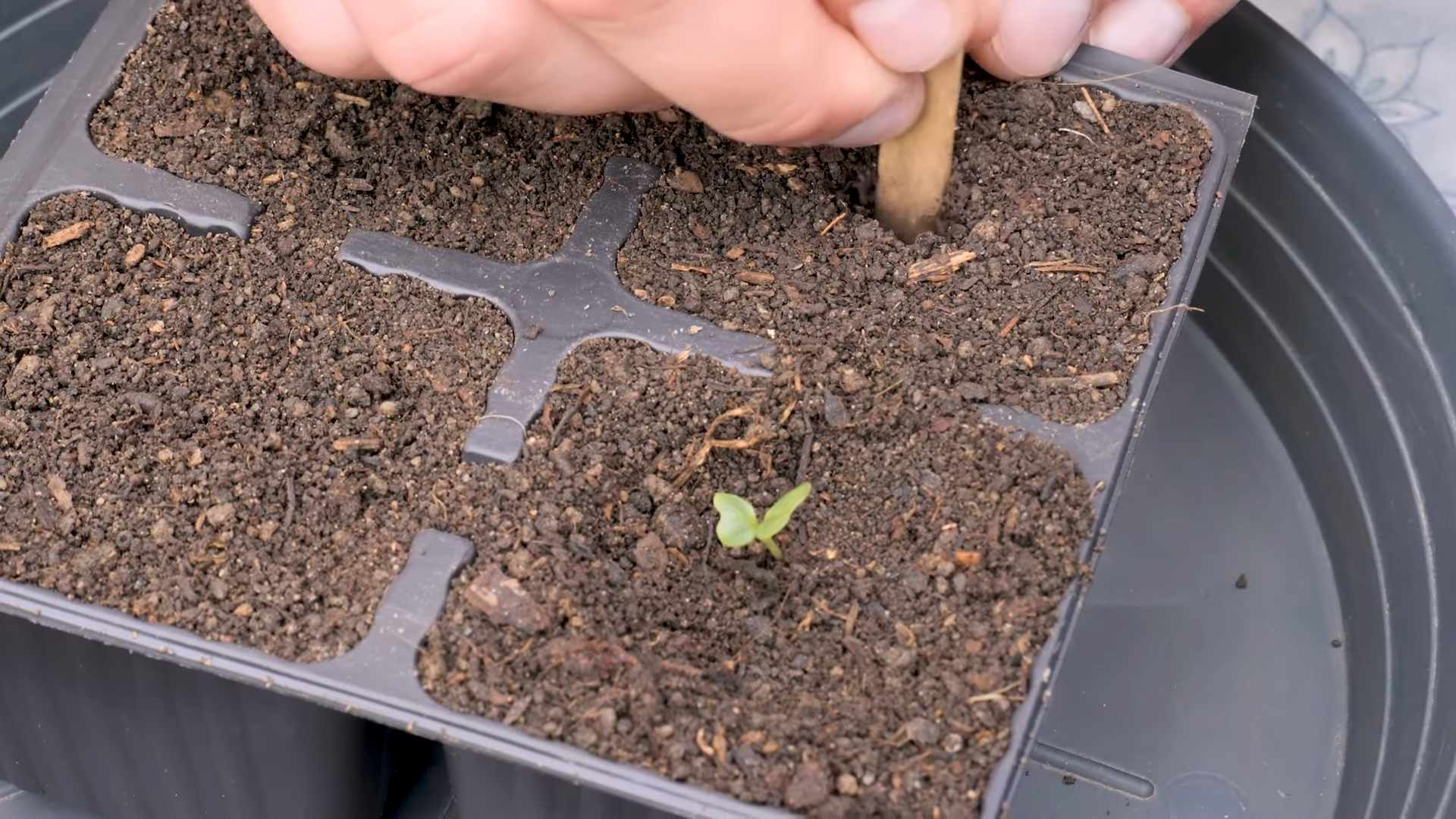
Conclusion
So, there you have it! Growing your own Romanesco cauliflower isn’t just about adding another vegetable to your garden; it’s about embarking on a rewarding journey that culminates in a stunning, fractal masterpiece gracing your dinner table. We’ve walked through the steps, from seed starting to harvest, and hopefully demystified the process along the way.
Why is this DIY trick a must-try? Because store-bought Romanesco simply can’t compare to the vibrant flavor and unparalleled freshness of a head you’ve nurtured yourself. Plus, the satisfaction of watching those intricate spirals unfurl is a unique experience that connects you to the natural world in a profound way. It’s a conversation starter, a culinary adventure, and a testament to your green thumb all rolled into one.
But don’t stop there! Experiment with different varieties of Romanesco. Some are more intensely green, while others lean towards a creamy yellow hue. Consider companion planting to deter pests and improve soil health. Marigolds, for example, are excellent at repelling nematodes, while thyme can help ward off cabbage moths. You can also try succession planting, sowing seeds every few weeks, to ensure a continuous harvest throughout the growing season.
For those in warmer climates, consider starting your seeds indoors during the hottest months and transplanting them in the late summer for a fall harvest. In cooler regions, you might want to start your seeds earlier indoors to give your plants a head start. Don’t be afraid to adjust the timing based on your specific microclimate and local weather patterns.
And remember, even if your first attempt isn’t perfect, don’t be discouraged! Gardening is a learning process, and every season brings new opportunities to refine your skills. The most important thing is to enjoy the journey and celebrate the small victories along the way.
We wholeheartedly encourage you to give this DIY trick a try. Imagine the pride you’ll feel when you harvest your first head of Romanesco cauliflower, knowing that you nurtured it from a tiny seed to a culinary marvel. Share your experiences with us! We’d love to hear about your successes, your challenges, and any tips or tricks you’ve discovered along the way. Post pictures of your Romanesco creations on social media and tag us – let’s inspire others to embrace the joy of growing their own food! Growing Romanesco cauliflower is a truly rewarding experience.
Frequently Asked Questions (FAQ)
Q: How long does it take to grow Romanesco cauliflower from seed to harvest?
A: Generally, it takes about 75 to 100 days from seed to harvest for Romanesco cauliflower. This timeframe can vary depending on the specific variety, your climate, and growing conditions. Starting seeds indoors can give you a head start, especially in regions with shorter growing seasons. Keep a close eye on your plants and monitor their growth to determine the optimal harvest time.
Q: What are the most common pests and diseases that affect Romanesco cauliflower, and how can I prevent them?
A: Romanesco cauliflower is susceptible to several common pests and diseases, including cabbage worms, aphids, flea beetles, clubroot, and black rot.
* **Cabbage Worms:** These caterpillars can decimate your plants. Handpicking them off is an effective organic method. You can also use Bacillus thuringiensis (Bt), a natural bacteria that targets caterpillars. Covering your plants with row covers can also prevent cabbage moths from laying their eggs.
* **Aphids:** These tiny insects suck the sap from plants, weakening them. A strong blast of water from a hose can dislodge them. Insecticidal soap or neem oil can also be effective.
* **Flea Beetles:** These small, jumping beetles can create numerous small holes in the leaves. Row covers can prevent them from reaching your plants. Diatomaceous earth can also be sprinkled around the plants to deter them.
* **Clubroot:** This soilborne disease causes swollen, distorted roots. Prevent it by ensuring good soil drainage and maintaining a soil pH of 6.5 to 7.0. Crop rotation is also crucial. Avoid planting brassicas (cabbage, broccoli, cauliflower, etc.) in the same spot for several years.
* **Black Rot:** This bacterial disease causes yellowing and browning of the leaves. Use disease-free seeds and practice good sanitation. Remove and destroy any infected plants. Avoid overhead watering, which can spread the disease.
Q: How do I know when my Romanesco cauliflower is ready to harvest?
A: The best time to harvest Romanesco cauliflower is when the head is firm, compact, and has reached its desired size. The individual florets should be tightly packed together and the overall head should have a vibrant color. Avoid letting the head become too mature, as the florets can start to separate and the flavor can become bitter. Gently press on the head; it should feel firm and dense. If it feels soft or spongy, it’s likely overripe.
Q: Can I grow Romanesco cauliflower in containers?
A: Yes, you can grow Romanesco cauliflower in containers, but you’ll need a large container – at least 12-18 inches in diameter and depth – to accommodate the plant’s root system. Use a high-quality potting mix and ensure good drainage. Container-grown plants may require more frequent watering and fertilization than those grown in the ground. Choose a sunny location that receives at least 6 hours of sunlight per day.
Q: What are some good companion plants for Romanesco cauliflower?
A: Companion planting can help deter pests, attract beneficial insects, and improve soil health. Some good companion plants for Romanesco cauliflower include:
* **Marigolds:** Repel nematodes and other soil pests.
* **Thyme:** Deters cabbage moths.
* **Rosemary:** Deters cabbage moths and other pests.
* **Nasturtiu
So, there you have it! Growing your own Romanesco cauliflower isn’t just about adding another vegetable to your garden; it’s about embarking on a rewarding journey that culminates in a stunning, fractal masterpiece gracing your dinner table. We’ve walked through the steps, from seed starting to harvest, and hopefully demystified the process along the way.
Why is this DIY trick a must-try? Because store-bought Romanesco simply can’t compare to the vibrant flavor and unparalleled freshness of a head you’ve nurtured yourself. Plus, the satisfaction of watching those intricate spirals unfurl is a unique experience that connects you to the natural world in a profound way. It’s a conversation starter, a culinary adventure, and a testament to your green thumb all rolled into one.
But don’t stop there! Experiment with different varieties of Romanesco. Some are more intensely green, while others lean towards a creamy yellow hue. Consider companion planting to deter pests and improve soil health. Marigolds, for example, are excellent at repelling nematodes, while thyme can help ward off cabbage moths. You can also try succession planting, sowing seeds every few weeks, to ensure a continuous harvest throughout the growing season.
For those in warmer climates, consider starting your seeds indoors during the hottest months and transplanting them in the late summer for a fall harvest. In cooler regions, you might want to start your seeds earlier indoors to give your plants a head start. Don’t be afraid to adjust the timing based on your specific microclimate and local weather patterns.
And remember, even if your first attempt isn’t perfect, don’t be discouraged! Gardening is a learning process, and every season brings new opportunities to refine your skills. The most important thing is to enjoy the journey and celebrate the small victories along the way.
We wholeheartedly encourage you to give this DIY trick a try. Imagine the pride you’ll feel when you harvest your first head of Romanesco cauliflower, knowing that you nurtured it from a tiny seed to a culinary marvel. Share your experiences with us! We’d love to hear about your successes, your challenges, and any tips or tricks you’ve discovered along the way. Post pictures of your Romanesco creations on social media and tag us – let’s inspire others to embrace the joy of growing their own food! Growing Romanesco cauliflower is a truly rewarding experience.
Frequently Asked Questions (FAQ)
Q: How long does it take to grow Romanesco cauliflower from seed to harvest?
A: Generally, it takes about 75 to 100 days from seed to harvest for Romanesco cauliflower. This timeframe can vary depending on the specific variety, your climate, and growing conditions. Starting seeds indoors can give you a head start, especially in regions with shorter growing seasons. Keep a close eye on your plants and monitor their growth to determine the optimal harvest time.
Q: What are the most common pests and diseases that affect Romanesco cauliflower, and how can I prevent them?
A: Romanesco cauliflower is susceptible to several common pests and diseases, including cabbage worms, aphids, flea beetles, clubroot, and black rot.
* **Cabbage Worms:** These caterpillars can decimate your plants. Handpicking them off is an effective organic method. You can also use Bacillus thuringiensis (Bt), a natural bacteria that targets caterpillars. Covering your plants with row covers can also prevent cabbage moths from laying their eggs.
* **Aphids:** These tiny insects suck the sap from plants, weakening them. A strong blast of water from a hose can dislodge them. Insecticidal soap or neem oil can also be effective.
* **Flea Beetles:** These small, jumping beetles can create numerous small holes in the leaves. Row covers can prevent them from reaching your plants. Diatomaceous earth can also be sprinkled around the plants to deter them.
* **Clubroot:** This soilborne disease causes swollen, distorted roots. Prevent it by ensuring good soil drainage and maintaining a soil pH of 6.5 to 7.0. Crop rotation is also crucial. Avoid planting brassicas (cabbage, broccoli, cauliflower, etc.) in the same spot for several years.
* **Black Rot:** This bacterial disease causes yellowing and browning of the leaves. Use disease-free seeds and practice good sanitation. Remove and destroy any infected plants. Avoid overhead watering, which can spread the disease.
Q: How do I know when my Romanesco cauliflower is ready to harvest?
A: The best time to harvest Romanesco cauliflower is when the head is firm, compact, and has reached its desired size. The individual florets should be tightly packed together and the overall head should have a vibrant color. Avoid letting the head become too mature, as the florets can start to separate and the flavor can become bitter. Gently press on the head; it should feel firm and dense. If it feels soft or spongy, it’s likely overripe.
Q: Can I grow Romanesco cauliflower in containers?
A: Yes, you can grow Romanesco cauliflower in containers, but you’ll need a large container – at least 12-18 inches in diameter and depth – to accommodate the plant’s root system. Use a high-quality potting mix and ensure good drainage. Container-grown plants may require more frequent watering and fertilization than those grown in the ground. Choose a sunny location that receives at least 6 hours of sunlight per day.
Q: What are some good companion plants for Romanesco cauliflower?
A: Companion planting can help deter pests, attract beneficial insects, and improve soil health. Some good companion plants for Romanesco cauliflower include:
* **Marigolds:** Repel nematodes and other soil pests.
* **Thyme:** Deters cabbage moths.
* **Rosemary:** Deters cabbage moths and other pests.
* **Nasturtiums:** Attract aphids away from your Romanesco plants.
* **Garlic and Onions:** Repel various pests.
* **Legumes (beans, peas):** Fix nitrogen in the soil, benefiting the Romanesco plants.
Q: My Romanesco cauliflower head is not forming properly. What could be the problem?
A: Several factors can contribute to a Romanesco cauliflower head not forming properly:
* **Insufficient Sunlight:** Romanesco cauliflower needs at least 6 hours of sunlight per day to thrive.
* **Poor Soil:** The soil should be well-drained and rich in organic matter. Amend the soil with compost or other organic materials before planting.
* **Nutrient Deficiencies:** Romanesco cauliflower needs adequate nutrients, especially nitrogen, phosphorus, and potassium. Fertilize regularly with a balanced fertilizer.
* **Water Stress:** Inconsistent watering can stress the plants and prevent proper head formation. Water deeply and regularly, especially during dry periods.
* **Extreme Temperatures:** High temperatures can also inhibit head formation. Provide shade during the hottest part of the day.
Q: How do I store Romanesco cauliflower after harvesting?
A: To store Romanesco cauliflower after harvesting, trim off any excess leaves and store the head in a plastic bag in the refrigerator. It will typically keep for about a week. You can also blanch and freeze Romanesco cauliflower for longer storage. To blanch, cut the head into florets and boil them for 2-3 minutes. Then, immediately plunge them into ice water to stop the cooking process. Drain well and freeze in freezer-safe bags or containers.


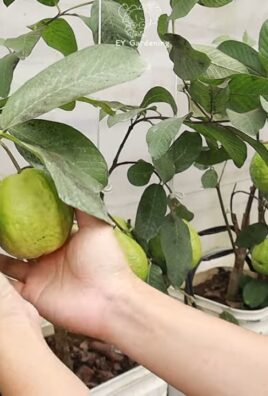
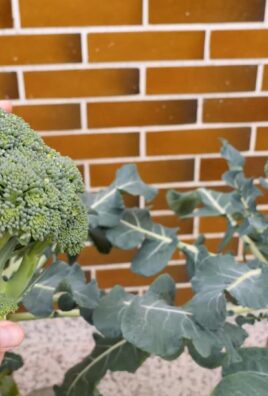
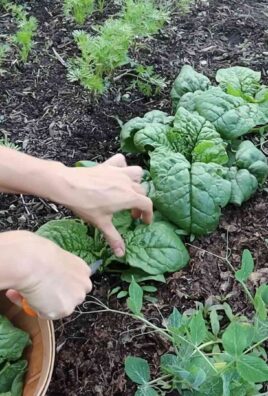
Leave a Comment